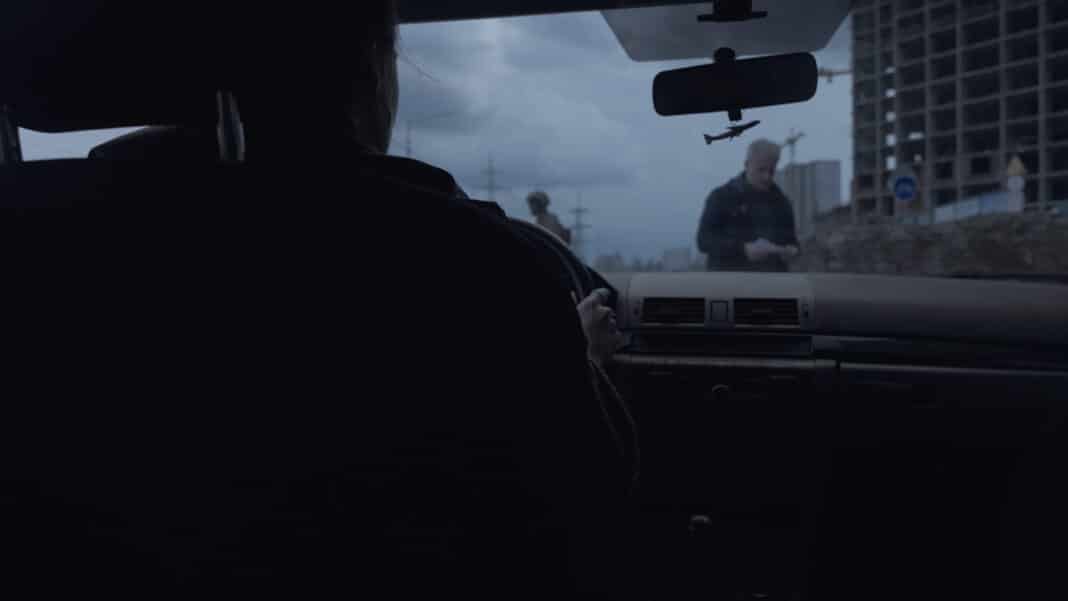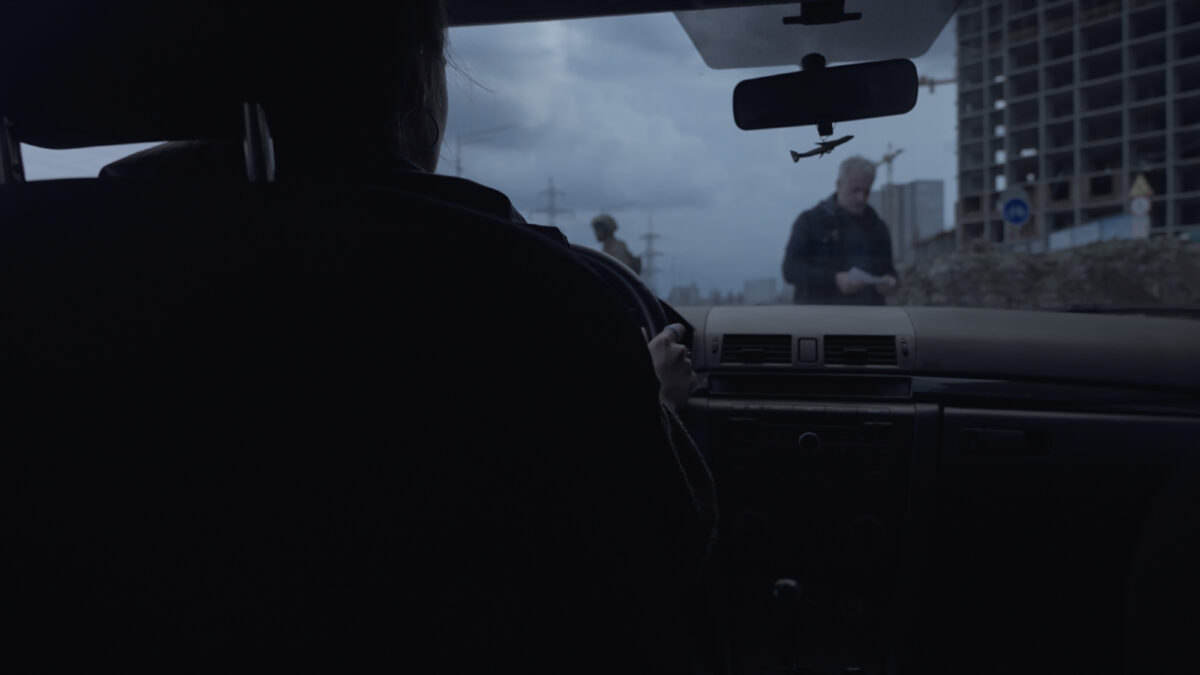Anastasiya Gruba builds the premise of her short film ‘Driving Lessons' on something familiar, even nostalgic, for many viewers. It’s a moment that might rewind their life back to adolescence or even earlier when, out of fatherly love and a kind of bravery, their father sat them behind the wheel on an empty street or quiet neighborhood road and tried to teach them how to drive. For many, that memory still holds a certain excitement. Just remembering it can send a jolt of dopamine through the brain.
But for the main characters, a Ukrainian father and daughter who have no one but each other, this moment doesn’t happen in a carefree past. It takes place in the middle of all-out war in the heart of Kyiv. There’s no thrill or nostalgia here. Instead, it feels like a turning point, or even a farewell.
The film opens in darkness with the father’s voice giving directions to his daughter, who’s behind the wheel. Like a commander guiding a soldier, he tells her when to turn left, right, or go straight. But this isn’t new for either of them. From early on, the father has always been the one telling her which way to go, what path to take. That’s the shape of most parent-child relationships, and here, it’s no different. The daughter may have her hands on the wheel (of the car and of her life) now but the father is still trying to decide where she’s going.
The film doesn’t just explore a parent-child relationship, but also how two generations, years apart, come face to face with conflict, war, and trauma. It is about confrontation, and how every confrontation forces a choice: to stay and face it, or to turn away and avoid it.
This becomes especially clear as the story unfolds. In the first third of the film, the father still sees his daughter as a child, not ready to make her own choices. We see this in a scene where he refers to the war as an “opportunity” — a chance for Ukrainian to be welcomed in Europe, to go wherever they want. But the daughter pushes back. She makes it clear: she’s not a child anymore, and she’s old enough to decide for herself.
The father, in contrast, avoids direct confrontation with reality and shies away from responsibility. One example comes at a military checkpoint when he’s fined because his daughter is driving without a license. Rather than accepting the consequences, he calls someone with connections at the military commissariat, asking for advice on how to get out of it.
One standout throughout is that the film never leaves the car. The camera, a living character itself, unseen by the characters, acts like a hidden passenger — quiet and unobtrusive, almost like a memory or a ghost quietly observing. It’s smartly positioned to feel like our own point of view. The movements are subtle and interactive, always tracking what we’d naturally look at, out the window or switching between father and daughter. It makes us feel like we’re in the car too. We become part of this tense, intimate space.
As we get closer to the end, the silences between father and daughter grow longer and more stretched. In the final moments, the daughter tells her father that she has enlisted in the Ukrainian armed forces as a volunteer. Without waiting for his emotional response, she leaves the car. This becomes the most significant moment in their relationship dynamic — the point when the daughter becomes the commander (of her life), and the father sees himself as a downranked commander, left with no choice but to align with his now-upgraded soldier.
The film ends with the father, lost in thought, driving silently through the city and stopping at a red light. The sharp red glow on his face feels like a mark of shame, like an emotional, undetonated bomb about to explode. He calls his contact at the military commissariat and requests boots and munitions for his daughter — now a soldier fighting for her country, and a commander to his father’s heart.
Driving Lessons | Full credits
Rating: 4 out of 5
Venue: Palm Springs International ShortFest
Producers: Mira Oyetoro, Denys Satanovskyi, Viktor Shevchenko, Sabina Asadova, Valeria Sochyvets
Production Companies: Contemporary Ukrainian Cinema, Salt Cinema, Packgauz production
Cast: Angelina Samchyk, Kostyantyn Danylyuk
Director-Screenwriter: Anastasiya Gruba
Cinematographer: Oleksandra Pletenetska
Editor: Philip Sotnychenko
Art Director: Viktor Korchynskyi
Sound Designer: Yelisei Zolotov
18 minutes
In Ukrainian

